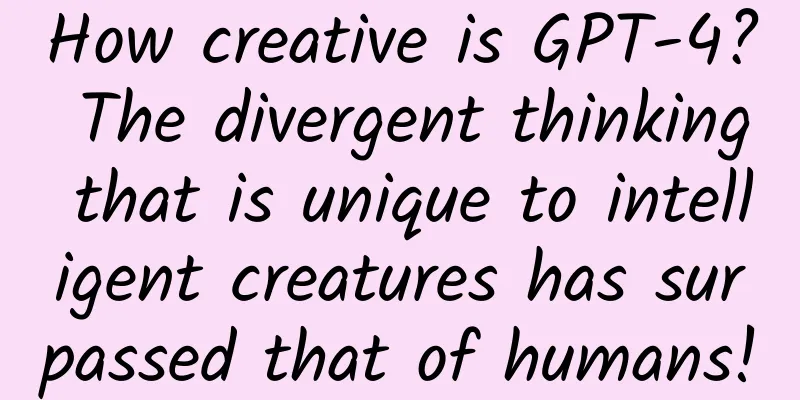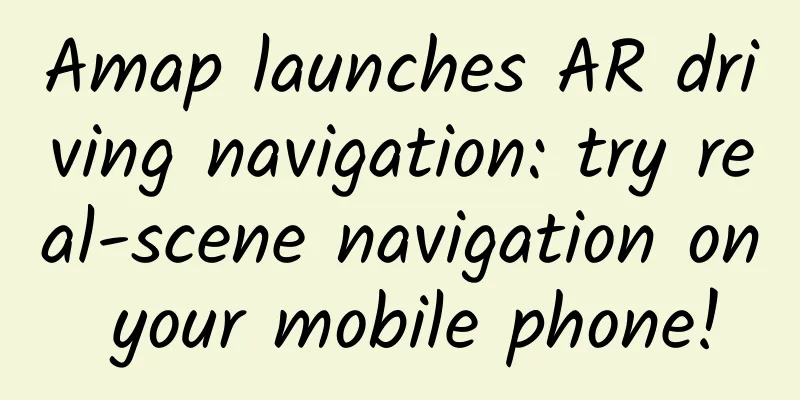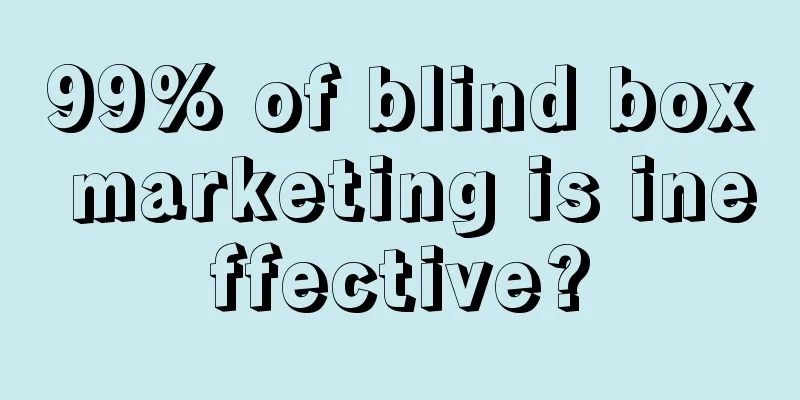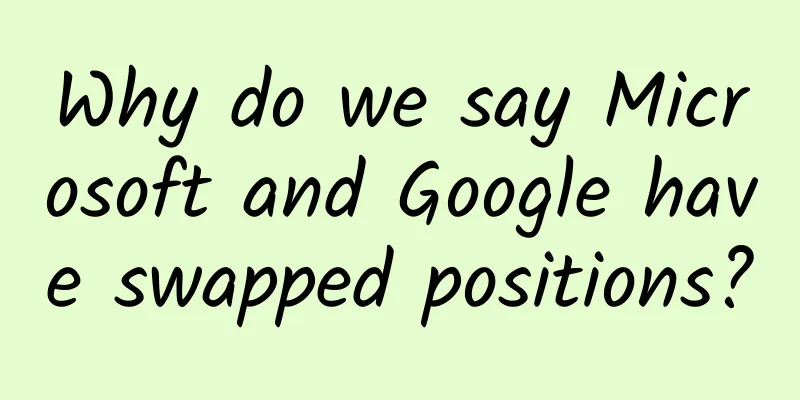How creative is GPT-4? The divergent thinking that is unique to intelligent creatures has surpassed that of humans!

|
Divergent thinking is considered to be the core indicator of creative thinking and the embodiment of human creativity. If large models such as ChatGPT-4 have divergent thinking that exceeds that of humans, does it mean that this uniqueness that belongs exclusively to intelligent creatures has also been learned by artificial intelligence (AI) ? Recently, a research team from the University of Arkansas discovered in a work that ChatGPT-4's performance in creative thinking tests has surpassed humans . The related research paper, titled "The current state of artificial intelligence generative language models is more creative than humans on divergent thinking tasks", has been published in Nature's subsidiary journal Scientific Reports. The research team said: "Overall, GPT-4 is more original and complex than humans on every divergent thinking task, even when controlling for response fluency. In other words, GPT-4 shows higher creative potential across the divergent thinking tasks ." Is GPT-4's divergent thinking really better than humans? According to the paper, the research team tested the performance of 151 human participants and ChatGPT-4 on three creative thinking tasks: Alternative Uses Task, Consequences Task, and Divergent Associations Task. These tasks are designed to assess individuals’ creative thinking abilities, including the creative use of everyday objects, the possible consequences of hypothetical situations, and the understanding of semantic differences between words. These criteria helped quantify each participant’s performance on the creative thinking tasks and also provided a basis for subsequent analysis. Alternative Uses Task: This is a classic test of creativity that asks participants to come up with as many different uses as possible for a common object. For example, participants might be asked to come up with multiple uses for a piece of paper. This task is designed to measure an individual's ability to generate unique and diverse ideas. Consequences Task: In this task, participants are asked to imagine an unusual situation or event and describe the possible consequences. For example, what would happen if gravity suddenly disappeared? This task examines the individual's creativity in logical reasoning and imagination. Divergent Associations Task: This task requires participants to provide as many associated words or ideas as possible for a given stimulus word (such as "cloud"). This task is used to assess an individual's mental flexibility and word association ability. The test results show that ChatGPT-4 significantly outperformed human participants in three creative thinking tasks. Whether in terms of the number of generated responses, the length of responses, or semantic differences, ChatGPT-4 showed significant advantages, highlighting its potential in the field of creative thinking. Figure | In the Alternative Uses Task, compared to humans, given the same number of opportunities to generate answers, GPT-4 is more successful in coming up with different answers and shows higher originality, but only for specific prompts. (Source: The paper) Figure | In the Consequences Task, compared to humans, GPT-4 was able to come up with more different responses more successfully with the same number of opportunities, and also showed higher originality depending on the prompt type. (Source: The paper) In order to exclude the influence of other factors, the study also conducted a control comparison of answer fluency. The results showed that even when answer fluency was controlled, ChatGPT-4 still showed higher creative potential, further confirming its superiority in creative thinking tasks. The results sparked a discussion about creative potential and practical applications. Although ChatGPT-4 showed significant advantages in creative thinking tasks, the research team also pointed out the limitations of its applicability . For example, compared to humans, ChatGPT-4 lacks autonomy and practical experience, and its creative potential relies on the guidance and input of human users. Therefore, although ChatGPT-4 is able to generate creative ideas, its practical application is still limited. In addition, when evaluating the creative potential of ChatGPT-4, the applicability and practicality of its answers also need to be considered. Although ChatGPT-4 can generate a large number of original ideas, whether these ideas are applicable to actual situations and whether they can produce meaningful results still requires further research and verification. Finally, the research team also emphasized the uniqueness and diversity of human creativity. Compared with ChatGPT-4, humans have a wider range of experiences and emotional experiences, and can think and create in more flexible and diverse ways. Therefore, when exploring creative potential, we cannot simply compare ChatGPT-4's performance with humans, but also need to consider its applicability and limitations in practical applications more comprehensively. AI replacing humans? It remains to be seen Compared with previous studies, the test results of this study revealed the significant advantages of ChatGPT-4 in multiple creative thinking tasks, providing us with new insights into artificial intelligence in creative thinking. However, this also raises more questions and future directions for exploration. We need to delve deeper into the relationship between artificial intelligence and human creative thinking and explore how to better use artificial intelligence to promote innovation. Future research will focus on developing smarter and more comprehensive measurement methods to better understand and evaluate all aspects of creative thinking. As artificial intelligence technology continues to develop, our understanding of human creativity will continue to deepen, laying a solid foundation for building a more creative and intelligent future. The research team believes that whether these tests can perfectly measure human creative potential is not the key point. The key point is that large models are evolving rapidly and surpassing humans in unprecedented ways . Whether they can replace human creativity remains to be seen. They also said that in the future, artificial intelligence will have great potential as a tool for inspiration, as an auxiliary tool for personal creative process, or as a tool to overcome fixedness. Reference Links: https://www.nature.com/articles/s41598-024-53303-w https://arkansasresearch.uark.edu/ai-outperforms-humans-in-standardized-tests-of-creative-potential/ |
Recommend
Building a traffic conversion analysis system from 0 to 1
Traffic is so expensive and conversion is so low!...
Faceless monster slide spacewalk teaching video + robot dance poppin teaching
Faceless monster slide spacewalk teaching video +...
Tencent Guangdiantong optimization methods, techniques and strategies, Guangdiantong promotion and operation case sharing
Abstract : How to make an excellent advertisement...
At what stage should a product do brand advertising, and when should it do performance advertising?
Many promoters in most companies make the mistake...
Android modularization exploration and practice
Preface Tim Berners-Lee, the inventor of the Worl...
The Strange Activities of 19th Century Scientists - Losing Cats
In the course of the development of modern physic...
Why is it bad if the title tag of a web page is too long?
Why is it bad if the title tag of a web page is t...
Android's official pull-down refresh component SwipeRefreshLayout
1. Problem Description In Android development, th...
Information flow advertising, what is the effect of such provocative creativity?
Eyeball economy, an advertisement that can attrac...
Complete guide to Tik Tok operations and the law of attraction!
This article explains the operation of TikTok fro...
Chanel announced that it would stop production. How long will Chanel stop production?
Amid the global COVID-19 pandemic, luxury brands ...
In the era of isolation, how can facial and fingerprint recognition “previous to failure”?
With only one month left until the end of 2020, d...
Is there a conflict between the original intention of e-sports and its commercial purpose?
The annual "Esports World Cup", the DOT...
How to write good copy? Learn these 17 methods!
1. First you need to digest the information about...
Why did the chick I bought as a child die so quickly? I finally know the answer!
We often see some merchants or small farmers carr...









